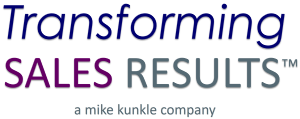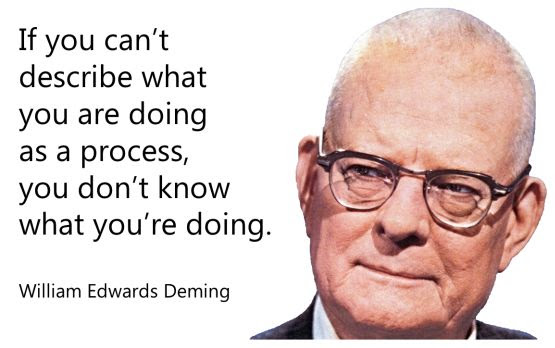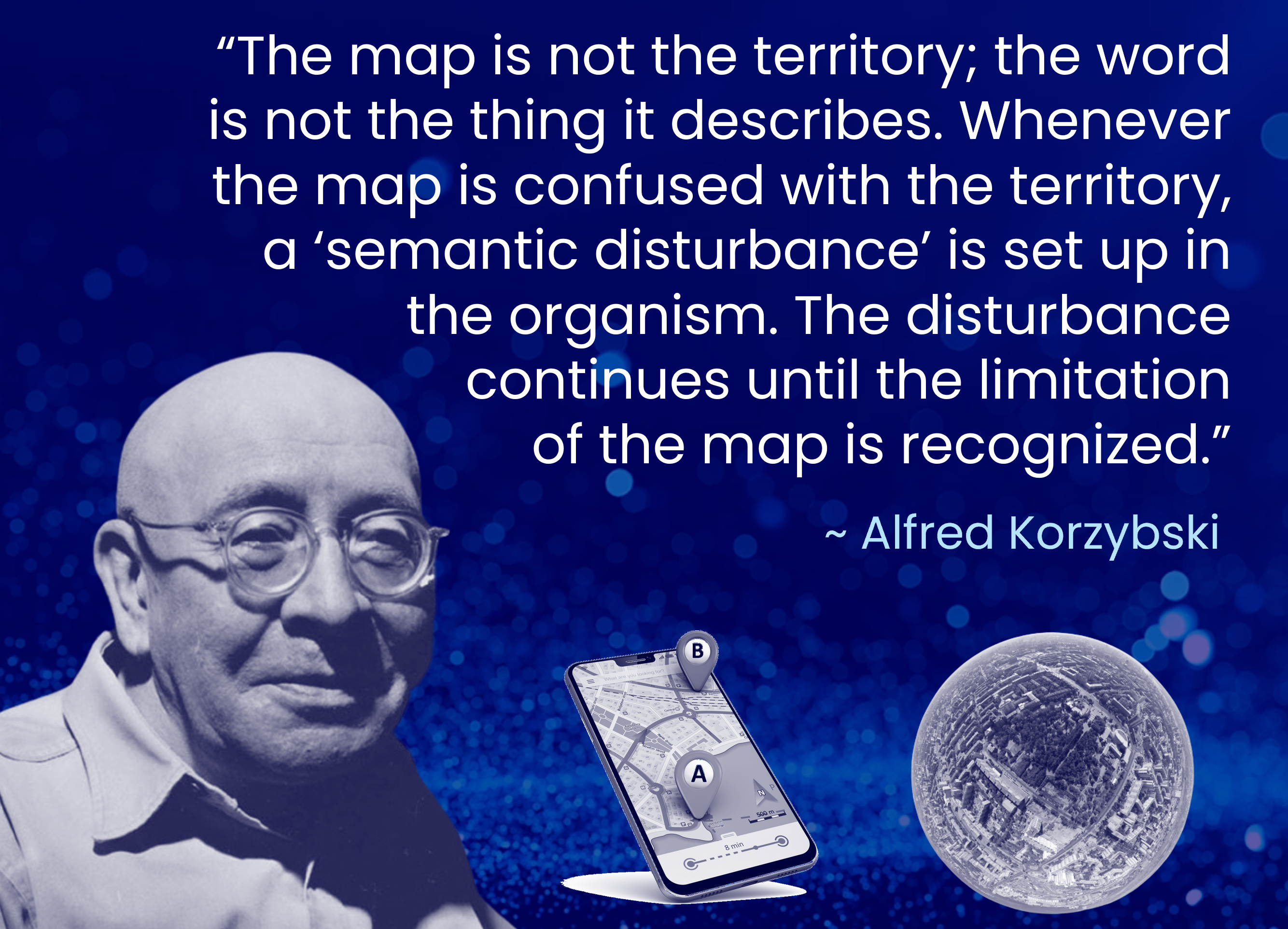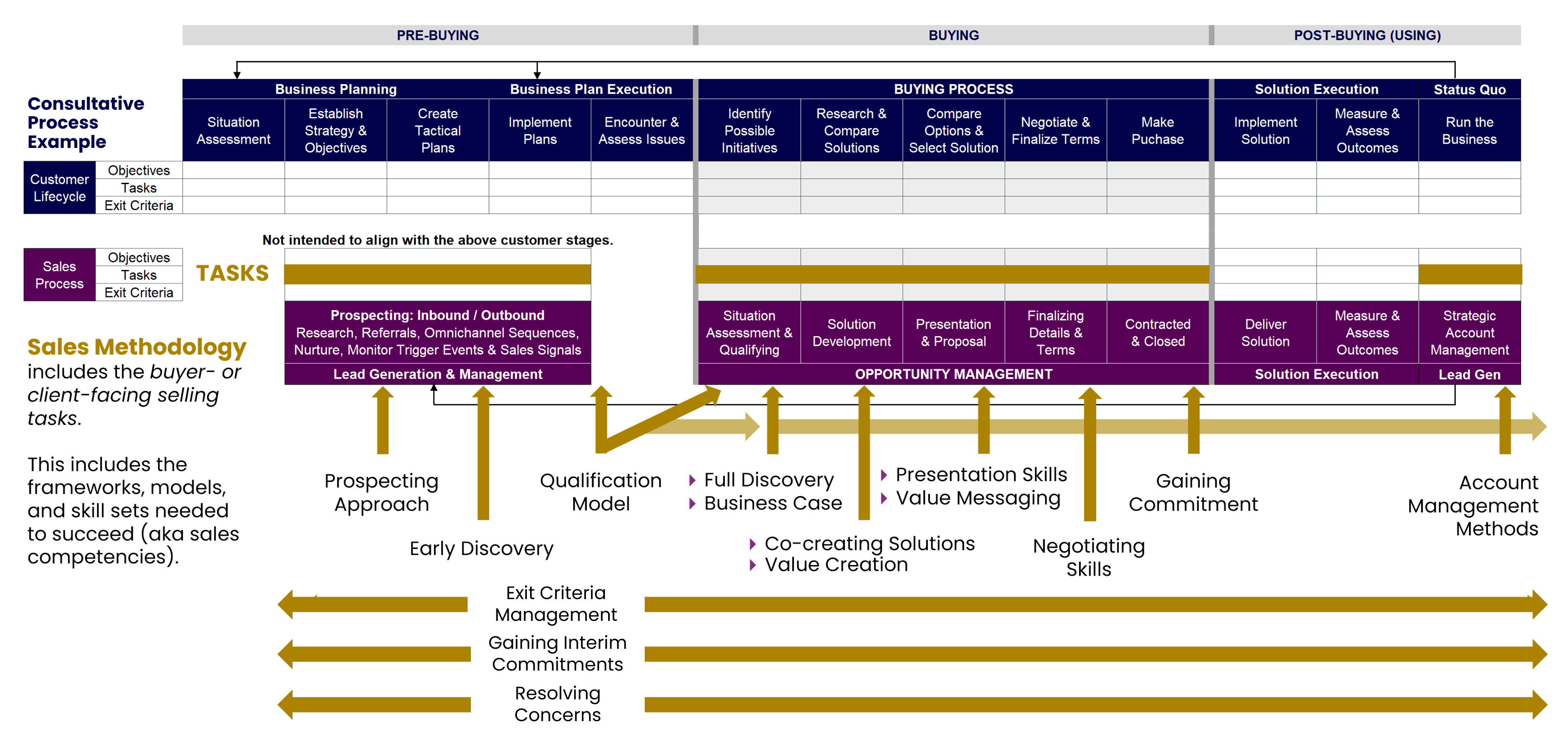The Perplexing Power of Process & Methodology in Complex B2B Sales

“As in other studies we’ve done, this year’s enablement study found that sales process and sales methodology adoption rates above 75% resulted in above-average gains for revenue plan attainment, quota attainment, and win rates, with a big boost at adoption rates greater than 90%.”
~ CSO Insights 2019 Sales Enablement Report (p. 32)
From the lowest to highest adoption rates in the chart, the data represent a:
- 15.3% increase in organizational revenue plan attainment
- 31.8% increase in individual quota attainment
- 30% increase in win rates for forecasted deals
From the average to the highest adoption rates, the increases are:
- 8.9% increase in revenue plan attainment
- 17.1% increase in quota attainment
- 19.7% increase in the win rates
So, let me ask you…
- What CEO or senior sales/revenue leader doesn’t want to report increases like these?
- What sales or revenue enablement leader doesn’t want to help deliver this kind of business impact?
Perplexing Inaction, Despite Compelling Evidence
This repeated finding by CSO Insights (and other sales researchers – see this and this as just two examples) should have made a splash for the sales profession that was bigger than dropping a six-ton wrecking ball into a backyard swimming pool.
Yet, to continue with the metaphors, rather than the fierce roar of a mighty lion, the collective impact of this reporting on the whole of the sales profession, was more like the whimpered mewl of a newborn kitten.
Worse, recently, I’ve read an increasing number of articles and posts about how buying has become so convoluted and non-linear, that given that and a buyers’ market, sales process just doesn’t matter anymore. To which I offer:
Now, by way of full disclosure, I love this Deming quote, which I wholeheartedly believe remains true. But when applied to modern sales process that is aligned to the modern buyers’ journey, that doesn’t mean I completely follow his original thinking about eliminating all variation and deviation. [SIDEBAR: See this post on LinkedIn, where I shared the Deming quote, and the interesting comments that ensued. Bob Apollo made this exact point about Deming’s original work and how sales process is somewhat different.]
Thoughts on Viewing Sales Process Differently
If I were doing process design internally, creating process for something within my span of control at work, or running engineering or a manufacturing line, I would follow Deming’s advice to a tee, to reduce or eliminate variation and deviation as much as possible. This is how you reduce errors and produce repeatable, replicable, and scalable workflow to deliver predictable results. Total Quality Management (TQM), Business Process Management (BPM), Six Sigma, and Lead Sigma are powerful methods for this sort of work. It’s also how I have applied systems thinking to The Building Blocks of Sales Enablement to deliver business impact (see this link for a webinar recap on the business impact topic).
You see where I’m headed, though, right? There are limits to how you can do this when you are working with external factors outside of your span of control. To the point of those who suggest that sales process is no longer linear, the root cause of that is the fact that the buyers are in control of their journey, timing, budgets, when they respond, and how they work together to decide. Some committees hum; others are more like a ragtag band of misfits. Sellers sometimes work with professional procurement leaders and company executives who work together frequently and have processes and policies to guide their purchase pursuits. Other times, sellers work with ad hoc buying committees who have never worked together to make a purchase decision, and who are operating without an aligned process, policies, or even guidelines and guardrails. Worse, sometimes, they are at odds, with conflicting objectives, outcomes, risks, and political ramifications.
Guess what? That in itself is not a change. Buyers may research and work more on their own, or digitally, but none of the above is new for the complex sale, other than the buying committees have increased in size which does makes it more “complex.”
Gartner and others now cite how convoluted the average buyer’s journey has become (see this chart, from Gartner, as an example). And as I just mentioned, on the far left side of a “disorganized/organized” sliding scale, there are cases where it’s absolute chaos and rife with infighting. Even on the far right, with disciplined workflows, it’s not easy, and often harder if an RFP or RFI process doesn’t allow open communication. This sliding scale and the difficulties inherent on both sides, is why many now cite the need for adaptability with sales process.
Should sales process be adaptable? Agile? Fluid? Yes, absolutely! I agree. (By the way, I’ve never advocated rigidity.) Yet, it’s still documentable; still a process. It has stages, objectives and tasks per stage with exit criteria for each, and possibly, for each individual buyer per stage. And, it should be aligned with the buying process that is in place (whatever it may be, however loose or disciplined it may be, or whatever Mutual Action Plans you co-create with buyers to hammer out your own path.
 [click the image to see a larger version]
[click the image to see a larger version]
This makes sense, right? The process includes the stages, objectives, tasks, and exit criteria. The seller side can actually align to the larger customer lifecycle with the “sales process” or Opportunity Management aligning with the buying process or purchase pursuit. Lead generation doesn’t align anywhere in particular, because when reps conduct outbound prospecting, they may not know where the customer is in the larger lifecycle yet. The above diagram is only one possible example and is a consultative example, where a solution is sourced and implemented (rather than a transactional example where a supplier is sourced and products are purchased, used, and replenished). Yes, the process depicts a progression, but buyers (and sellers) may not always move through the process linearly.
With this laid out now, I worry more about those saying sales process is no longer valid. Or those who fully buy-in to that Gartner spaghetti map (more than Garter intends, even), as if it’s indiscernible or unmanageable. On that, I call B.S. (By the way, even Gartner isn’t saying that – they discerned it and documented it – they’re just saying it’s a long, hard slog sometimes.) You just have to figure out how the buyers’ journey you’re navigating might be different, or whether different decision makers might be in different stages at the same time, based on how you have (or haven’t) satisfied their exit criteria, in your sales process efforts.
A Picture of a River is Not a River
This is what I tell people, these days. A picture of a river is not a river. Or, the map is not the territory.
Your GPS doesn’t show you potholes, hills, street grates, missing manhole covers, open car doors, bikes, crosswalks, children playing, or pedestrians. The map is a guide while driving requires attention, situational fluency, and skill. Sales process management requires this same attention, situational fluency, and skill. The sales process is a map which you should align to the buyers’ journey, as best you can, and which can be depicted linearly but does not always move that way, and which also has its own stage-appropriate sales exit criteria, as well (such as qualifying the opportunity, which is a sales process exit criteria, but not a buying process exit criteria). The seller and sales process must be dynamic and adaptable.
Even in simpler times, when sales process was (may have been?) somewhat more linear, it’s always been possible that something could occur to interrupt a linear path. It could be as simple as adding a new decision maker to the mix, the resignation of your Champion, or an unexpected budget freeze after a particularly poor quarterly performance.
And in a complex sale, it’s also always been true that different decision makers could be in different process stages at the same time, based on whether or not their individual, current-stage exit criteria have been satisfied. This is so important to understand. Let me say that again:
It’s always been true that different decision makers could be in different process stages at the same time, based on whether or not their individual, current-stage exit criteria have been satisfied.
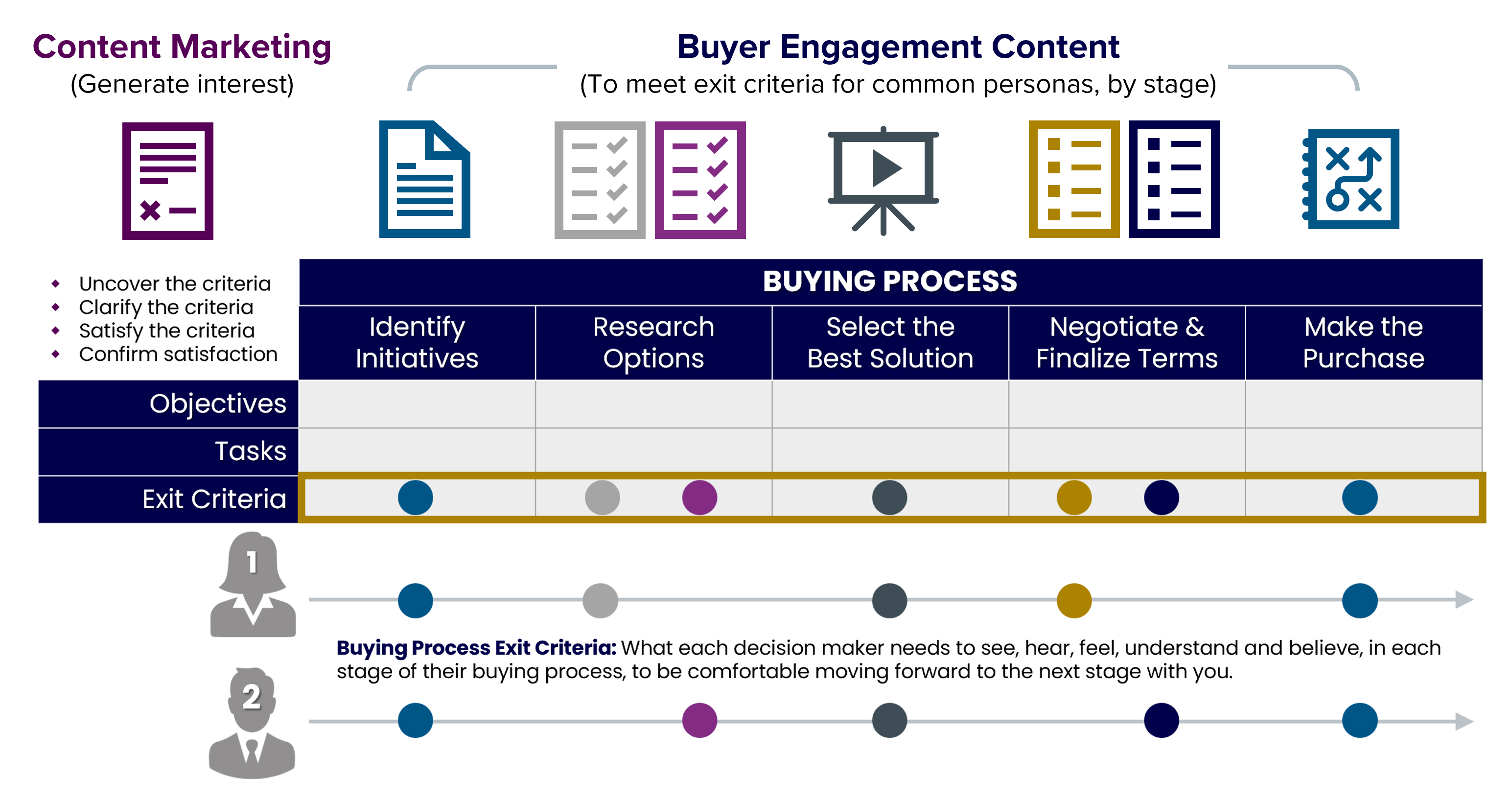 [click the image to see a larger version]
[click the image to see a larger version]
Think of it like The Formula One Monaco Grand Prix or the Indy 500. All the race cars are going around the same track, and they are all in the same race, but they’re not all in the same place at the same time. This has been largely ignored by many in sales process management and now as it surfaces and awareness increases, the spaghetti charts show up, and everyone throws their arms in the air, like buyers aren’t still 1) recognizing a problem, 2) deciding to explore solutions outside their company, 3) vetting vendors, 4) picking the best options, 5) negotiating the terms of trade, and 6) making a purchase. If you go up high enough in a jet plane, even the most complex landscape starts to look like little connected squares, rectangles, and circles.
Control is an Illusion, but You Can Influence & Guide
With a brief nod toward the “Teach, Tailor, and Take Control” concepts from The Challenger Sale, there are things that reps can do to take control (or at least exert appropriate influence) and more effectively navigate the journey, such as:
- Co-creating Mutual Action Plans (MAPs)
- What I teach in Modern Sales Foundations about:
- Conducting a Situation Assessment (to understand your buyers better than others and create a compelling business case)
- Effectively Navigating the Buyer Landscape
- Managing individual Buying Process Exit Criteria per stage (uncover, clarify, satisfy, confirm satisfaction)
- Delivering Personalized Value Messaging that resonates based on individual value drivers (including business, experiential, aspirational, and personal needs).
In reality, though, control is an illusion. Servant leadership is a better concept today, and I prefer “influence” and “guide” to control, per se. Buyer-centric sellers operate in their buyers’ and customers’ best interests, so sellers would do better to help their buyers feel more in control, and confident about working with them. (If you doubt this, check out the book, The JOLT Effect: How High Performers Overcome Customer Indecision by Dixon and McKenna, and the detailed research behind it.) But there are things sellers can do to steer the journey and influence the path and outcomes. Counterintuitively, we maintain the most control with buyer-centric sales methodology, authentic communication with skilled facilitation, co-creating agendas and shared expectations, striving for clarity and alignment at every interaction. Read those posts on MAPs, navigating the buyer landscape, and managing buying process exit criteria, and you’ll immediately see ways to take the reigns as much as possible, on a process that you do not truly control. And while these approaches and personalizing value messaging are on the sales methodology side, they’re all helpful in navigating process effectively.
By the way, this is exactly what great methodology does, which makes for a nice transition. As the data shared above would suggest, when paired and aligned with Sales Process, Sales Methodology is the other performance level to pull, to radically improve sales productivity (revenue per rep, which manifesting in the research as revenue plan attainment, quota attainment, win rates).
Now, Layer Methodology into Your Process
Methodology includes the buyer- or client-facing selling tasks in your process. It’s how your sellers sell. This includes the frameworks, models, and skills sets needed to successfully complete stages (also known as “sales competencies) across the customer lifecycle. Beyond the client-facing skills, and managing buying process exit criteria for all buying stakeholders, a methodology may also address things that the sellers must do, such as qualifying, or other behind-the-scenes or asynchronous/backstage tasks and activities (research, preparation, agenda development, taking and distributing meeting notes, other administration, etc.). Many of the commercially-available methodologies are very good, but incomplete. The most commonly supported activities for commercial methodologies include prospecting and opportunity management. Some vendors offer wider support with storytelling, presentation skills, negotiating, and strategic or large account management practices, but few cover the entire customer lifecycle (or at least without stringing courses together to get coverage). Take a look at the below chart to see an overview of methodology aligned to the customer lifecycle and sales processes.
[click the image to see a larger version]
This chart is worth pausing to review closely. It’s high level because it’s difficult to indicate where every framework, model, step, and skill could be used without writing in 2-point font, but it will give you a good overview of how methodology plugs into process to support both buying and selling. The models, steps, skills, and competencies are one layer deeper. The rest comes back to situation fluency and judgment, just as with process.
This illustrates the need for an aligned sales methodology, as do the data from CSO Insights and other sources. Without a documented, aligned approach, you’ll never get to 75 percent or 90+ percent adoption, which is where the major performance lift occurs. An aligned methodology also supports building playbooks, developing training, delivering better onboarding, and allows managers to diagnose behaviors against performance so they can coach to close gaps. It also makes it possible to build competency assessments to identify and close skill gaps with individual development plans, all of which can support a cadence of continuous improvement, improved adoption, skill mastery, and ultimately… improved sales performance. (Sales enablers, read this as “business impact” – which is exactly what you want.)
Unfortunately, the lack of focus on an aligned sales methodology may be as big a gap as the lack of focus on implementing process effectively and teaching agility. Many sales forces are operating somewhere between “leave them alone and let them sell” and a mixed bag of methodologies with a focus on tips and tricks, which might just as well be a free-for-all (mix-and-match). This approach hampers everything we just said an aligned methodology supports.
While it’s incredibly popular and many sales consultants and book authors encourage reps to “fend for themselves,” this is a poor organizational strategy. (To be clear, I’m not saying it’s not sometimes needed, because organizations don’t do a great job – but it’s still a poor sales force management strategy.) There are so many things wrong with this approach that it’s hard to know where to start. Rather than recreate the wheel here, I wrote an entire post on the SPARXiQ blog called, “The Dangers of Using a ‘Tips & Tricks’ Sales Methodology,” which you can read at your leisure. I’d recommend you check it out.
Knowledge Is Potential Power. Action Is Real Power.
In business in general and certainly in the sales profession, the Knowing-Doing gap is stunningly wide. Go re-read the CSO Insights quote I used to start this article. Let’s assume you believe the data, which may be a second barrier. Now – knowing what you now know – what do you plan to DO about it? Are you mentally preparing for a sales force assessment as we speak? Do you see your own gaps, relative to having an aligned sales process and sales methodology, and are you motivated and compelled to start working to close them? Are you calculating your current quarterly or YTD progress toward your revenue plan and doing the math to see what the improvements in the above chart would yield for you at year-end?
If you’re not, why is that, exactly?
I’m guessing you get my point. And no, I would never suggest you blindly knee-jerk to derail your current (well-aligned) strategy, go-to-market/tactical plans, and your (already-disciplined) execution. But I would suggest those calculations, and an assessment of how well-aligned things really are, how disciplined your execution really is, and whether the above adoption focus for process and methodology might get you closer to your 2023 goals (or whether they can coexist effectively, supporting each other).
The bottom-line is, knowing all of the stuff in this post is not enough. Whether you are a board member, a PE investor, a CEO, a senior sales leader, or a sales/revenue enablement pro, the decisions you make next can make all the difference in your sales force performance and the results you post for 2023.
Choose wisely.
Closing Thoughts
Thanks for reading, be safe out there, and by all means… let’s continue to elevate our sales profession.
Mike
Follow my work and connect
- The Building Blocks of Sales Enablement Book: https://bit.ly/BBofSE
- The Building Blocks of Sales Enablement Learning Experience: https://www.GoFFWD.com/Blocks/
- SPARXiQ Blog: https://sparxiq.com/author/mikekunkle
- Distribution Strategy Group Blog: https://distributionstrategy.com/author/mike-kunkle/
- Sales Effectiveness Straight Talk Webinars: https://bit.ly/MikeKunkle-OnDemand (60 Free Recorded Webinars)
- LinkedIn Articles: http://bit.ly/MK-LinkedInArticles
- LinkedIn Profile: https://www.linkedin.com/in/mikekunkle
- Twitter: https://twitter.com/mike_kunkle
About Mike
Mike Kunkle is a recognized expert on sales training, sales effectiveness, and sales enablement. He’s spent over 27 years helping companies drive dramatic revenue growth through best-in-class training strategies and proven-effective sales transformation systems – and he’s delivered impressive results for both employers and clients. Mike is the founder of Transforming Sales Results, LLC and works as the Vice President of Sales Effectiveness Services for SPARXiQ, where he designs sales training, delivers workshops, and helps clients improve sales results through a variety of sales effectiveness services. Mike collaborated with Doug Wyatt to develop SPARXiQ’s Modern Sales Foundations™ curriculum and also authored the SPARXiQ’s Sales Coaching Excellence™ course. His book, The Building Blocks of Sales Enablement, is available on Amazon and he collaborated with Felix Krueger to launch The Building Blocks of Sales Enablement Learning Experience.
